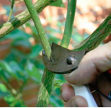To Prune or Not to Prune
go.ncsu.edu/readext?778458
en Español / em Português
El inglés es el idioma de control de esta página. En la medida en que haya algún conflicto entre la traducción al inglés y la traducción, el inglés prevalece.
Al hacer clic en el enlace de traducción se activa un servicio de traducción gratuito para convertir la página al español. Al igual que con cualquier traducción por Internet, la conversión no es sensible al contexto y puede que no traduzca el texto en su significado original. NC State Extension no garantiza la exactitud del texto traducido. Por favor, tenga en cuenta que algunas aplicaciones y/o servicios pueden no funcionar como se espera cuando se traducen.
Português
Inglês é o idioma de controle desta página. Na medida que haja algum conflito entre o texto original em Inglês e a tradução, o Inglês prevalece.
Ao clicar no link de tradução, um serviço gratuito de tradução será ativado para converter a página para o Português. Como em qualquer tradução pela internet, a conversão não é sensivel ao contexto e pode não ocorrer a tradução para o significado orginal. O serviço de Extensão da Carolina do Norte (NC State Extension) não garante a exatidão do texto traduzido. Por favor, observe que algumas funções ou serviços podem não funcionar como esperado após a tradução.
English
English is the controlling language of this page. To the extent there is any conflict between the English text and the translation, English controls.
Clicking on the translation link activates a free translation service to convert the page to Spanish. As with any Internet translation, the conversion is not context-sensitive and may not translate the text to its original meaning. NC State Extension does not guarantee the accuracy of the translated text. Please note that some applications and/or services may not function as expected when translated.
Collapse ▲Pruning shrubs and trees in the landscape is an important and rewarding garden activity, but some folks are intimidated by the prospect, afraid that they will kill their plant if they don’t do it right.
Pruning can help manage the size of shrubs and train young trees, direct how they grow, impact blooms and fruiting, as well as make them healthier and more attractive. Especially in the case of trees, pruning can improve safety on the property. Pruning is a vital part of growing a garden. Knowledge is power, so know before you grow.
Pruning know-how actually starts even before you plant. Selecting shrubs and trees that are suited to your environment and location is very important. The expected adult height, spread, and growth rate should be taken into account when choosing plants for your site.
You may be in the transition stage of choosing new plants to accent your garden while managing the plantings that were already on site. Observation and investigation is the first step of “know before you grow.” The Gregorian Calendar is the most widely used calendar in the world today telling us when to expect the first day of spring, summer or winter. While plants can’t read the calendar they do respond to environmental triggers. Daylength changes, as well as other more variable triggers such as temperature and moisture, activate growth and other plant responses.
investigation is the first step of “know before you grow.” The Gregorian Calendar is the most widely used calendar in the world today telling us when to expect the first day of spring, summer or winter. While plants can’t read the calendar they do respond to environmental triggers. Daylength changes, as well as other more variable triggers such as temperature and moisture, activate growth and other plant responses.
Knowing what is normal for your type of plant will help you make informed decisions about when and how to manage it. Start by determining the type of shrub or tree that you have and whether it flowers in the spring on wood produced the previous year, or whether it flowers later in the year on this season’s growth. Prune spring-flowering shrubs these shrubs AFTER they have flowered in spring, but before the next year’s flower buds are set. Prune summer-flowering shrubs when they are dormant or in early spring before budbreak.
There are five basic techniques that are used for pruning woody ornamental trees and shrubs: pinching, heading back, thinning, renewal pruning, and shearing. Examine the plant structure to identify ideal locations for pruning cuts. Some plants require more of one method than another, but good pruning is usually a combination of several methods. Read more about these techniques: General Pruning Techniques and read more detailed information regarding the specific plants: How to Prune Specific Plants.
Remember to prune DDD: Dead, Dying or Diseased. All dead and dying branches can be removed whenever you spot them. Where you identified diseased limbs, cut well below the diseased areas, and don’t prune when the plants are wet (water helps spread many diseases). Avoid the use of pruning cut treatments like wound dressing as they may interfere with the plants ability to seal over the cut area and trap moisture and pathogens at the cut location that migrate into the plant. Be sure to sanitize your cutting tools between plants to avoid spreading pathogens from plant to plant through the wounds you make. For more information contact your local N.C. Cooperative Extension office.
Minda Daughtry is the Horticulture Agent for North Carolina Cooperative Extension in Lee County.




